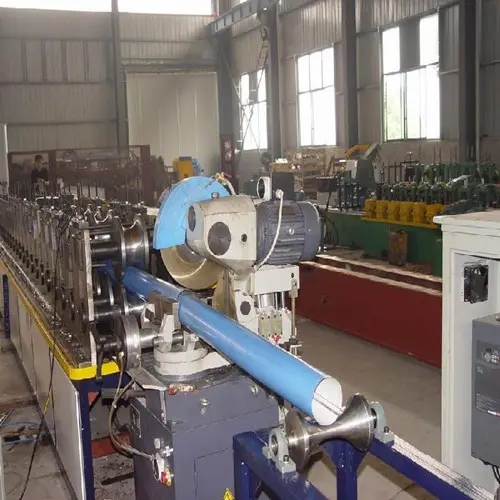
Understanding Structural Channel Roll Forming An Overview
Structural channel roll forming is a crucial process widely regarded in manufacturing, particularly within the construction and industrial sectors. This technique produces C-shaped channels that are essential for a variety of applications, including framing, support systems, and trim. In this article, we will delve into the roll forming process, its benefits, applications, and the technology involved.
The Roll Forming Process
Roll forming, in essence, is a continuous bending operation that involves feeding a long strip of metal through a series of rollers. Each roller progressively shapes the metal into a desired cross-sectional profile, which in the case of structural channels, results in a channel shape. This process is efficient for producing large lengths of uniform sections, making it ideal for large-scale manufacturing.
Typically, the process begins with a flat strip of metal, usually made from materials like steel or aluminum. Operators set up the roll forming machine, which consists of multiple sets of rollers that are strategically arranged to achieve the desired profile. As the metal strip passes through these sets of rollers, it gradually changes shape until it emerges as a completed channel.
Advantages of Roll Forming Channels
One of the primary advantages of roll forming is its efficiency. The process allows for high-volume production, which translates into reduced labor costs and faster turnaround times. The continuous nature of roll forming minimizes waste, as the entire strip of metal is utilized, resulting in higher yield rates.
Another significant benefit is the durability of the products. Roll-formed channels tend to have excellent structural integrity, making them ideal for load-bearing applications. The uniformity of the channels produced also ensures compatibility with various construction components and systems, further enhancing their reliability.
Applications of Structural Channels

Structural channels are employed in a wide range of applications. In the construction sector, they are primarily used as framing components in buildings, providing structural support for walls, roofs, and floors. These channels are critical for reinforcing structures, as they help distribute weight and improve stability.
Moreover, they are commonly used in the manufacturing of shelving systems, conveyor systems, and other industrial racks. Their versatility allows for easy integration into different designs, making them favored choices among architects and engineers.
In addition to construction, structural channels are also prevalent in the automotive industry, where they are used in the manufacturing of vehicle frames, supports, and structural elements. Their strength and lightweight nature contribute to improved vehicle performance and safety.
Technological Developments in Roll Forming
The advancements in technology have significantly enhanced the roll forming process. With the incorporation of Computer Numerical Control (CNC) systems, precision in shaping and cutting has drastically improved. This level of automation not only enhances accuracy but also streamlines production, making it possible to easily switch between different profiles.
Furthermore, innovations in materials science have led to the use of high-strength steels and other advanced materials that provide greater durability while reducing overall weight. This trend is particularly important in industries such as automotive and aerospace, where reducing weight can lead to significant gains in fuel efficiency and performance.
Conclusion
Structural channel roll forming represents a cornerstone of modern manufacturing and construction methodologies. With its numerous benefits, including efficiency, durability, and versatility, it plays a vital role in the development of various structures and industrial applications. As technology continues to evolve, the roll forming process is likely to become even more efficient and precise, further solidifying its importance in the manufacturing landscape.
In summary, understanding the nuances of structural channel roll forming not only highlights its significance but also showcases the innovations that drive the industry forward. Embracing these advancements is essential for manufacturers aiming to stay competitive and meet the ever-growing demands of the market.